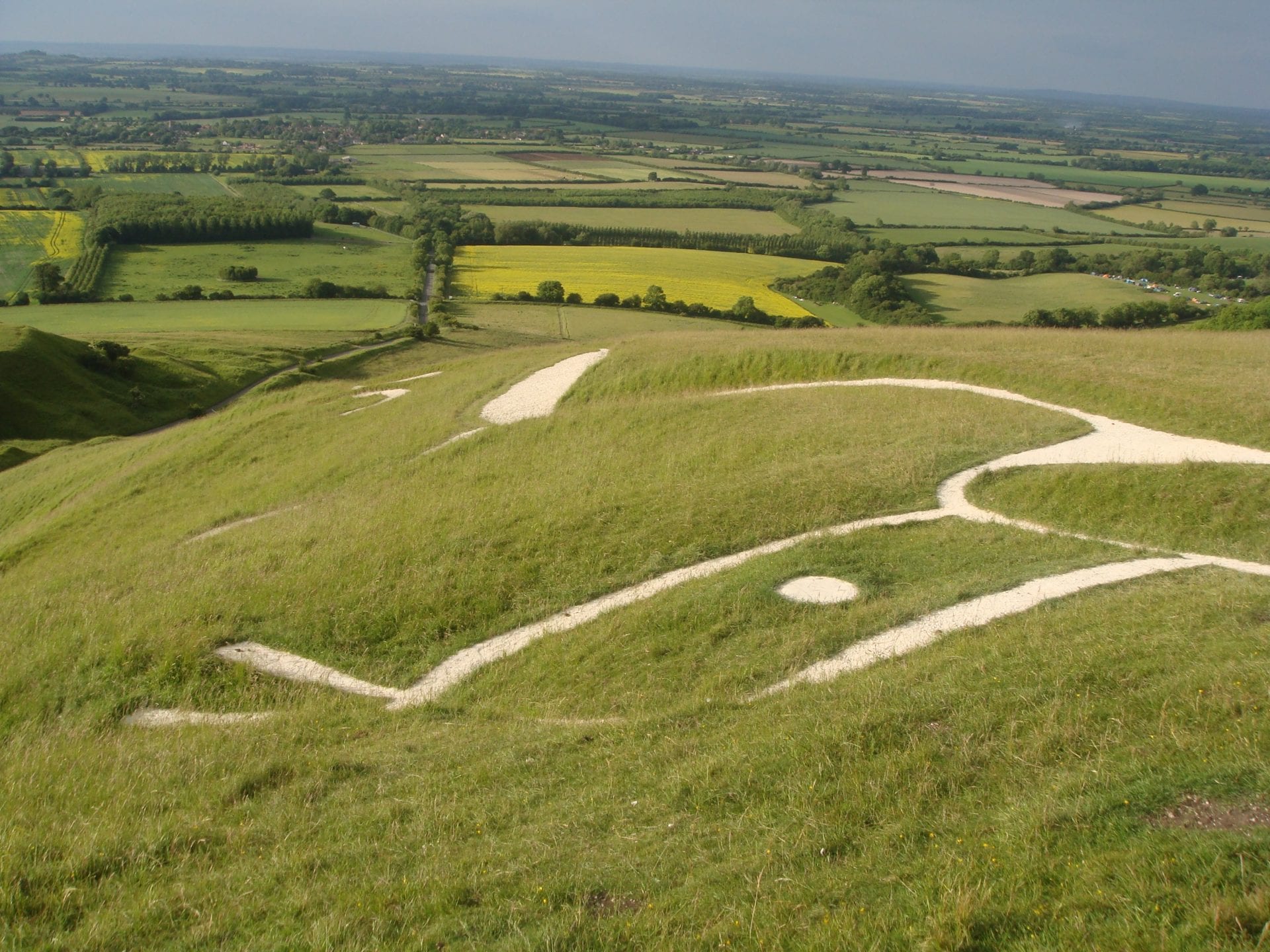A geoglyph is a large design or motif (generally longer than 4 metres) produced on the ground and typically formed by clastic rocks or similarly durable elements of the landscape, such as stones, stone fragments, live trees, gravel, or earth.
1 – The Nazca Lines
The Nazca Lines are a series of ancient geoglyphs located in the Nazca Desert in southern Peru. The high, arid plateau stretches more than 80 km (50 mi) between the towns of Nazca and Palpa on the Pampas de Jumana about 400 km south of Lima.
Although some local geoglyphs resemble Paracas motifs, scholars believe the Nazca Lines were created by the Nazca culture between 400 and 650 AD. The hundreds of individual figures range in complexity from simple lines to stylised hummingbirds, spiders, monkeys, fish, sharks, orcas, and lizards.
2 – Atacama Giant
The Atacama Giant is a large anthropomorphic geoglyph in the Atacama Desert, Chile. Located at “Cerro Unitas”, this is the largest prehistoric anthropomorphic figure in the world with a height of 119 metres (390 ft) and represents a deity for the local inhabitants from AD 1000 to 1400.
The figure was an early astronomical calendar for knowing where the moon would set; by knowing this the day, crop cycle, and season could be determined. The points on the top and side of the head would say what season it would be depending on their alignment with the moon, which was very important in determining when the rainy season would come in the barren Atacama.
3 – Uffington White Horse
The Uffington White Horse is a highly stylised prehistoric hill figure, 110 m long (374 feet), formed from deep trenches filled with crushed white chalk. The figure is situated on the upper slopes of White Horse Hill in England.
The figure presumably dates to “the later prehistory”, i.e. the Iron Age (800 BC–AD 100) or the late Bronze Age (1000–700 BC).
This view was generally held by scholars even before the 1990s, based on the similarity of the horse’s design to comparable figures in Celtic art, and it was confirmed following a 1990 excavation led by Simon Palmer and David Miles of the Oxford Archaeological Unit, following which deposits of fine silt removed from the horse’s ‘beak’ were scientifically dated to the late Bronze Age.
4 – Paracas Candelabra
The Paracas Candelabra, also called the Candelabra of the Andes, is a well-known prehistoric geoglyph found on the northern face of the Paracas Peninsula at Pisco Bay in Peru.
Pottery found nearby has been radio carbon dated to 200 BC, the time of the Paracas culture. The design is cut two feet into the soil, with stones possibly from a later date placed around it. The figure is 595 feet tall, large enough to be seen 12 miles at sea.
5 – Blythe Intaglios
The Blythe Intaglios or Blythe Geoglyphs are a group of gigantic figures found on the ground near Blythe, California in the Colorado Desert.
The intaglios are found east of the Big Maria Mountains, about 15 miles (24 km) north of downtown Blythe, just west of U.S. Highway 95 near the Colorado River. The largest human figure is 171 feet (52 m) long.
The figures are so immense that they were not observed by non-Indians until the 1930s. The set of geoglyphs includes several dozen figures and a labyrinth, thought to be ceremonial in nature. They are believed to date from 1000 BC.
6 – Works of the Old Men
Desert kites – known to the local Bedouin as the Works of the Old Men depicting an array of “wheels,” among other motifs are found across the deserts of Syria, Jordan, Southern Israel and Saudi Arabia.
They are believed to have been used for hunting wild animals and consist of long dry-stone walls converging on a neck which opens into a confined space which was used as the killing floor. The length of the walls can run to hundreds of metres and can be best seen from the air. Most desert kites have been dated through scientific methods to be between 3 and 5 thousand years old.
7 – Amazonian Geoglyphs
Since the 1970s, numerous geoglyphs have been discovered on deforested land in the Amazon rainforest, Brazil, leading to claims about Pre-Columbian civilisations.
Ondemar Dias is accredited with first discovering the geoglyphs in 1977 and Alceu Ranzi with furthering their discovery after flying over Acre.
8 – Russian Moose
The geoglyph discovered near Zyuratkul in Russia depicts accurate contours of an animal similar to an elk or moose, with four legs, two antlers and a long snout. It may also have had a tail, however this has now been obscured.
Excavations have unearthed stones laying 4.5 metres (15 ft) wide, precisely under the contour at a depth of 30 centimetres (12 in) to 40 centimetres (16 in). The borders consist of large stones with a center filled with smaller ones.
The site has been dated to the Neolithic or Chalcolithic periods between 4000 and 2000 BC from over forty stone tools resembling pickaxes discovered on site during recent excavations.
Header Image Credit : Garry S – https://tinyurl.com/ydx4d8k9





